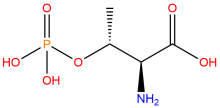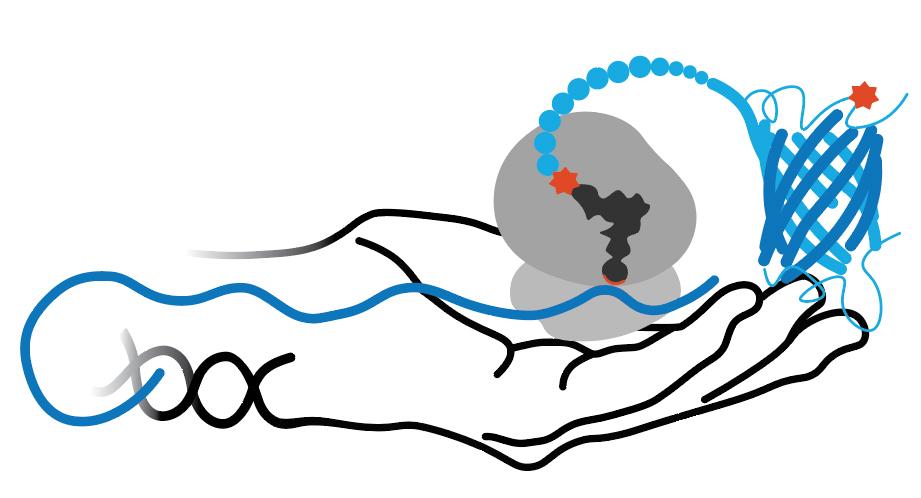ncAA Structure (png, jpg, jpeg)

ncAA Foundational Publication Support
Zhang, Michael Shaofei, Simon F Brunner, Nicolas Huguenin-Dezot, Alexandria D Liang, Wolfgang H Schmied, Daniel T Rogerson, and Jason W Chin. (2017) 2017. “Biosynthesis And Genetic Encoding Of Phosphothreonine Through Parallel Selection And Deep Sequencing.”. Nature Methods 14 (7): 729-736. doi:10.1038/nmeth.4302.
Moen, Jack M, Kyle Mohler, Svetlana Rogulina, Xiaojian Shi, Hongying Shen, and Jesse Rinehart. (2022) 2022. “Enhanced Access To The Human Phosphoproteome With Genetically Encoded Phosphothreonine.”. Nature Communications 13 (1): 7226. doi:10.1038/s41467-022-34980-5.
ncAA Utility
Used to produce site-specifically phosphorylated proteins at a threonine residue via genetic code expansion.
ncAA Source
Endogenous - Biosynthesized
ncAA Availability
Expressing the pduX gene (from Salmonella enterica) allowed E. coli to produce intracellular pThr. This gene is present on the same plasmid as pThrRS, available from Addgene as #173899.
RS/tRNA Pair Usage Information
The GCE system published in 2018 gave full-fidelity pThr incorporation into mutliple proteins tested and is recommended for production of recombinant pThr proteins in E coli (and is available from Addgene). The 2022 variation using the same RS/tRNA pair does not give full-fidelity pThr incorporation and was developed for studying protein-protein interactions of the human pThr sites in the context of 31 residue long peptides expressed in E coli.
ncAA Synonyms
(2S,3R)-2-amino-3-hydroxybutanoic acid 3-phosphate
O-phospho-L-threonine
O-phosphono-L-threonine
pThr
L-phosphothreonine
O-phospho-L-threonine
O-phosphono-L-threonine
pThr
L-phosphothreonine
ChEBI ID
37525
PubChem Link
PDB Code
TPO
